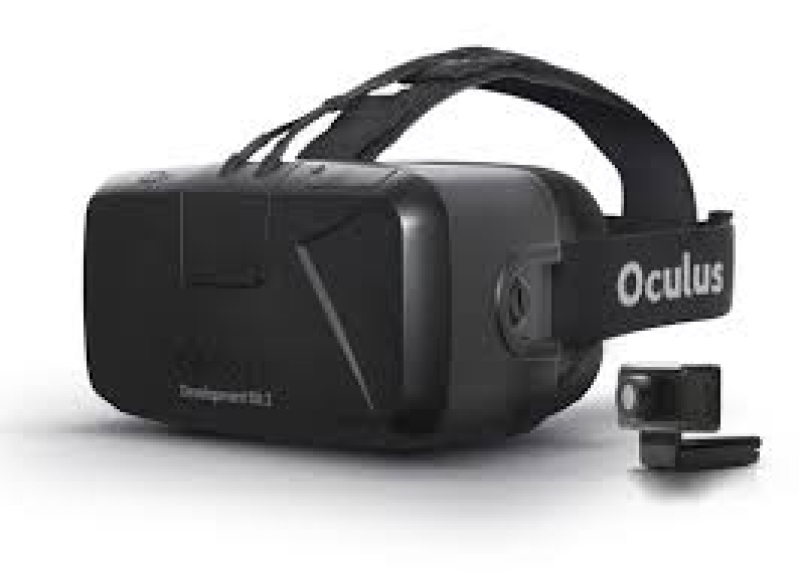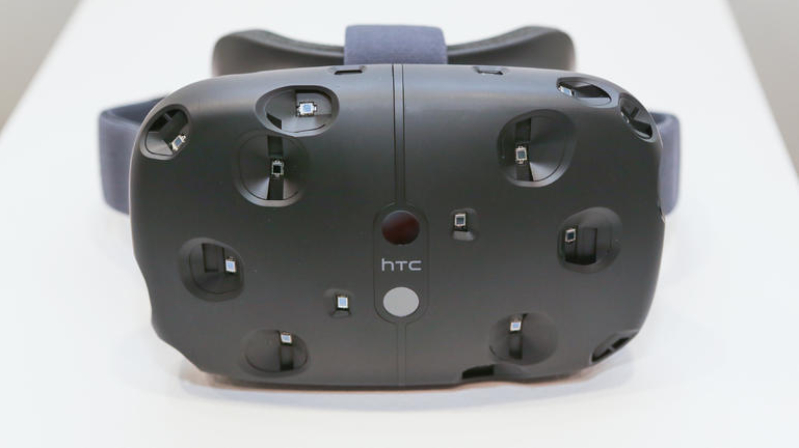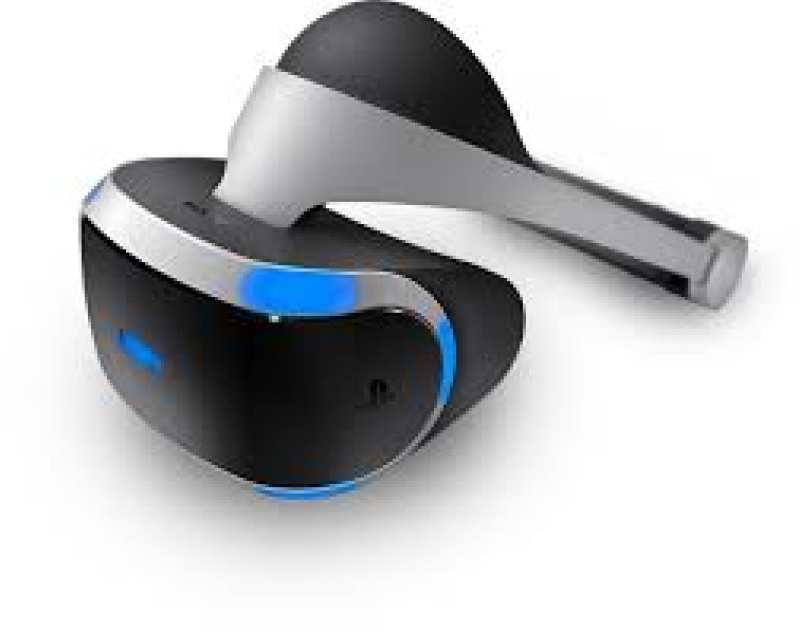


While I was attending PAX Prime 2015, I had a chance to try out not one, not two, but three virtual reality headsets. This is my report of all of them, including a review of which one that I might buy, assuming that I could afford it. I have also included Five Questions about Virtual Headsets.
The Oculus Rift
I'll go ahead and start with the Oculus Rift. This was the Virtual Reality headset that looked like it actually had a chance to make our nineties dreams come true. It was so good that it isn't even for sale yet, and Facebook bought it right up. Already people are using the Oculus as a synonym for VR Headset like people use Kleenex for facial tissue.
There was an Oculus booth at PAX Prime 2015 that was at least four times as large as the one from last year. I had a chance to try a game that was introduced to me last year, Xing: The Land Beyond, but was now optimized for the Oculus VR headset. I wanted to see this game on the Oculus because I have been waiting years for something like this.
Some of you might remember a surrealistic CD-ROM game called Myst. The gameplay was all about point-and-click and examining still photos for clues to solve the mystery of why you were there, but it was worth playing for sheer concept alone. I mean, imagine if you could go into the world of Myst without all of the slides. This is a world that you can turn around and look and see the beauty of this world surrounding you. I so wish that I could go into this puzzle-solving game, and it is now a reality.
I found that to move in the game required a controller, and this was also required for picking up objects and manipulating them to solve puzzles. Now, I will have to say that I sat down for all of this gameplay, and this is important as I discuss the other two VR headsets. This was just the game, but I could either turn my head or use a button to automatically turn my head 45 degrees. It kind of made me a little dizzy, and was the only drawback I could find for using the Oculus.
The HTC Vive
The HTC Vive is another competitor in the VR realm, and I found that each of the demonstrations that I tried required me to be up on my feet, walking around. Now, I was in a confined space, but the game allowed me to work in these limitations, as I will explain later.
I can't remember if the Oculus required that I wear a separate set of headphones, but this did. In addition to that, the games that I played on the HTC Vive required me to wear these very intriguing hand controllers. As I was viewing the default screen of my new virtual world, which was quite white, I saw these white sticks being handed to me. In actuality, these sticks were quite black, but my Vive showed them as the opposite color. I don't really have a point with that fact, other than virtual reality can change you perceive actual reality.
The control sticks essentially worked my hands in the games. At my thumbs were these circular touch sensors that were like a controller. There was also a trigger for my index finger, and a button that I could hit with my middle finger or the side of my hand. I'll just call this "the button" until I can explain better how these games work.
I spent a half-hour playing a game known as Call of the StarSeed. This was a game like Xing, but I could walk around, within limits. By using the left controller touch sensor, I found that I could essentially "teleport" myself several feet in front of me. This was my chief form of motion in this game. Anything close by I could just walk up to.
Here's the thing: I could use my control sticks to pick up virtual objects. In several cases, I could use the items together. For example, I could click the button and move a stick to pick up a flare gun, then I could pick up flares and load that flare gun. I've never interacted with any object like this before, and it just made it so much more real. I can tell in the next few years, there will be gloves to allow me to "feel" the object and manipulate it more realistically. By the way, I had to use the flares to shoot bells, and that was awesome, but the bells were hard to hit.
It was difficult to manipulate the objects, and the game made it a bit more difficult as I had to take out a backpack. This was done by physically reaching behind my shoulder and pulling out a knapsack and cycling through my inventory. It was tricky to work, and I had to put a cassette in a recorder/player Walkman. It took some getting used to, but when was the last time I interacted with my inventory like that in any game I've ever played?
Now, could I walk anywhere I wanted? Not quite. As I was going through this virtual reality, a "wall" would show up that looked like a barred jailcell wall made of lightsabers. I'm having an easier time describing the science fiction events that I write about than this actual scientific fact.
In addition to the Call of the StarSeed, I had a chance to try out a demonstration of several programs for the HTC Vive that I will try and describe as best as I can, but words won't do them justice. I had the same hardware setup, and I started with a blank slate, but I was able to create an inflated balloon by squeezing the trigger. I could even hit the balloon, which had the "Valve" logo. I get the feeling that they sponsored this thing. Steam is going to be a different thing after the Vive officially gets released.
The demonstration began as I found myself underwater on a sunken ship. I found that I could shake my hand and discover that I could shake and manipulate particles within the water. I could also look around and see magnificent fish like stingrays, and their shadows as well. Then I saw it: the blue whale. This was something that was huge, and I could turn my head and view this massive beast in front of me. No video game could produce a creation of such grandiosity. I can't remember when anything in a video game had taken me aback so much.
I then flashed into a demonstration that allowed me to pick up objects and make contraptions. I found it was difficult to pick up things at first, but I pieced them together to make something that worked. In a few years, the Vive will be calling Minecraft a wuss.
I was then taken into a curiosity shop that looked like it was from a medieval era, and I'm told it was written with DOTA in mind. I could wander about the shop, which was not a large area. There were specially marked spots that would allow me to be shrunk to a small size if I hit the trigger within proximity.
In one instance at this shop, I shrunk so small, that I was on a shelf. I could look over the shelf, and it looked like a sheer drop. You know that feeling that you get when you are close to a precipice? That sudden fear that you could accidentally go over the edge and just fall to your death? I felt that. When was the last time that you played a game where you felt a realistic fear of heights?
There was another instance of realism in this Virtual Reality. There was a jack-in-the-box, but it didn't pop at the right time. Then, all of sudden, it did, and I got a terrible jump scare. At least I could punch the head after it popped out. You heard me on that one.
Then I entered a virtual drawing program that allowed me to draw in the air, in 3D. It worked like a Paint Program, and I could even cycle through a series of choices like I would a 2D paint program. I wish I could describe this better, and I wanted more after my demonstration ended.
The Sony Morpheus
This VR headset needs some work. Maybe Sony had it near their PlayStation booth just to show players that it will be good, eventually. Right now, it is a proof of concept, and one that is already being outdone by its previously mentioned competitors.
I was told that there was a game that you could try called Kitchen, which is a serious horror game with some jump-scares. Of course, I get scared playing 2D horror games. Instead, I played some game where I had to hit a soccer ball coming at me with my head.
I have no idea if this game was faulty, or this Sony Morpheus prototype was bad. Whatever the case, I could not hit that virtual soccer ball with my mind to hit a target to save my life. I understand that a lot of games have a learning curve, and this must be one of them.
Needless to say, I was glad when the demonstration was over. Worse yet, the headphones (which were again separate from the headset) wanted to fall off when I jumped up to head-butt those stupid virtual soccer balls.
Five Questions about the VR Headsets
Which one would I buy?
Right now, I'm leaning toward the HTC Vive. I don't know if it was in development as an imitator to the Oculus, but dang, it was just awesome, the demonstrations allowed for more movement, and the control sticks gave better...well, control.
Will they be affordable?
I'm told that the Xing programmers purchased theirs for a few hundred dollars. That is about the price of a console. I don't know whether or not these VR headsets will need to be upgraded, but if a new one came out every five years, consumers would probably justify the purchase. The issue is, you can't spend a little under a hundred dollars for a second controller, you have to buy an entire new headset to play a 2-player game. That is pretty expensive for a family with a few kids.
Will some space will be required?
If you are using a program where a controller is your method of movement, then no. However, the Wii and the Kinect really got gamers off of the couch, but the HTC Vive requires a small room dedicated to it. I've heard that there are these treadmills with balls underneath them rather than conveyors so the user can walk in any direction.
When will these VR headsets be out?
The earliest that I am getting is "sometime in 2016", maybe Q2. This could be the new gadget to have next year.
How will VR headsets affect things, and people?
I'm going to assume that there will still be a market for television, as one TV set can be enjoyed by multiple people. However, people who can enjoy one VR headset is only one. So the video market could be affected, but the headphone market will be intact, provided VR headset companies don't make headphones integrated within the headset. If they do, then many headset manufacturers will want in on that action.
As for people, there are those who are addicted to television. There are people who are addicted to the Internet. There will be people will be addicted to Virtual Reality. This will be a harder drug then TV or the Web, but as realistic as it is, it is still fake. Hopefully, there will be only a small minority that will crave virtual reality over actual reality.







